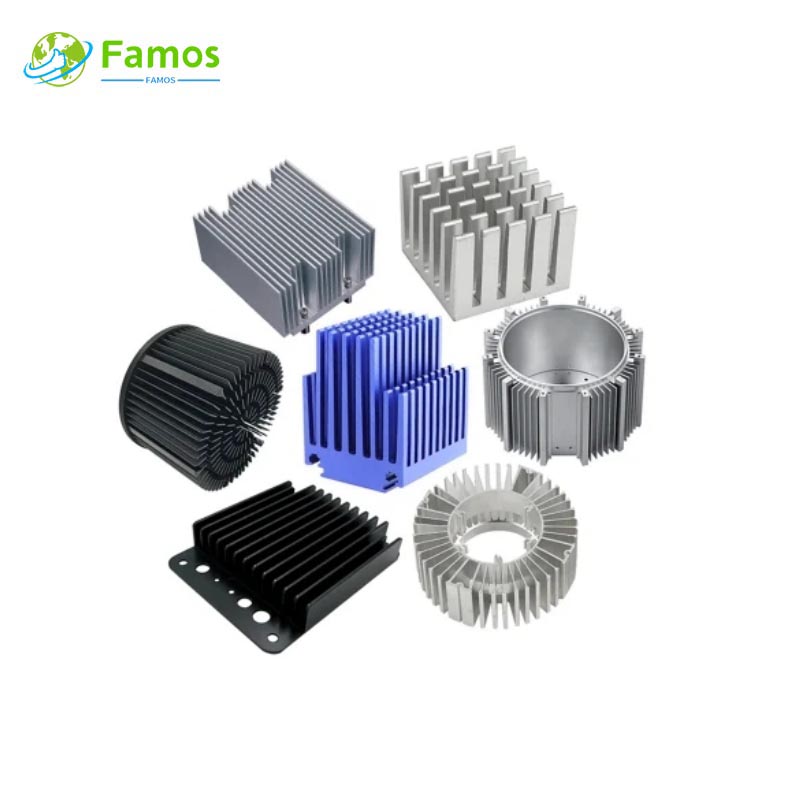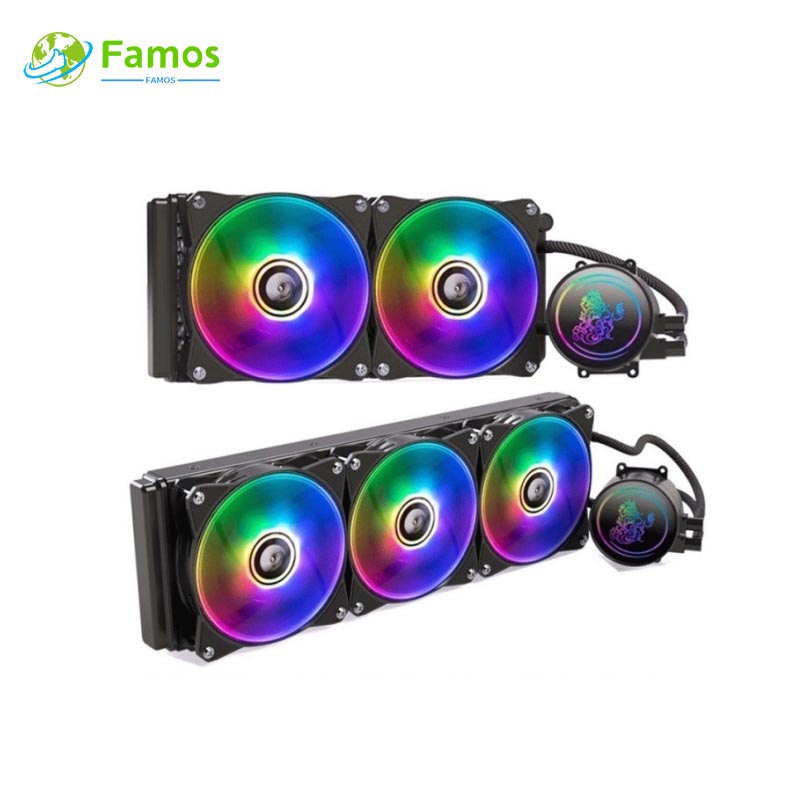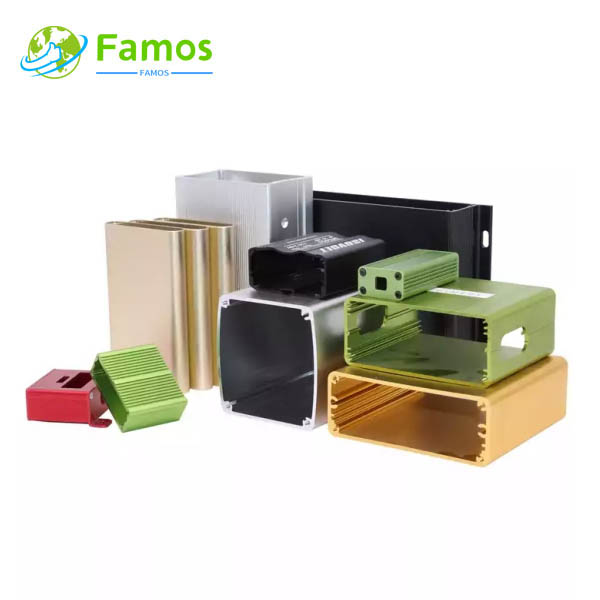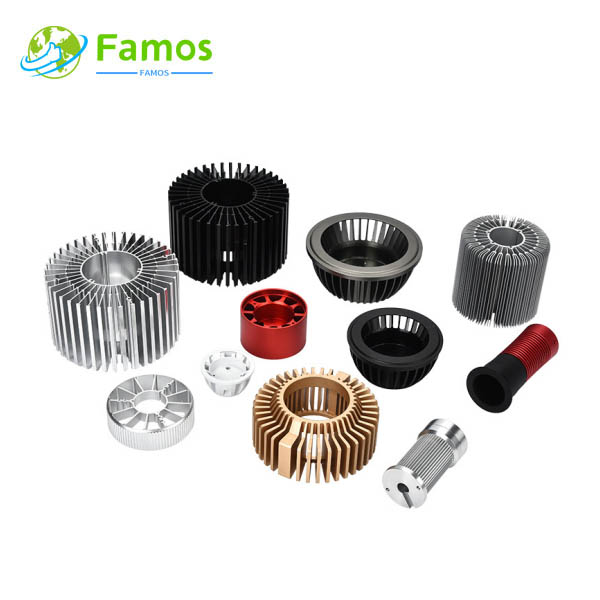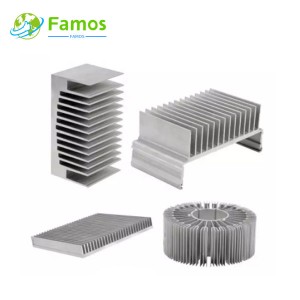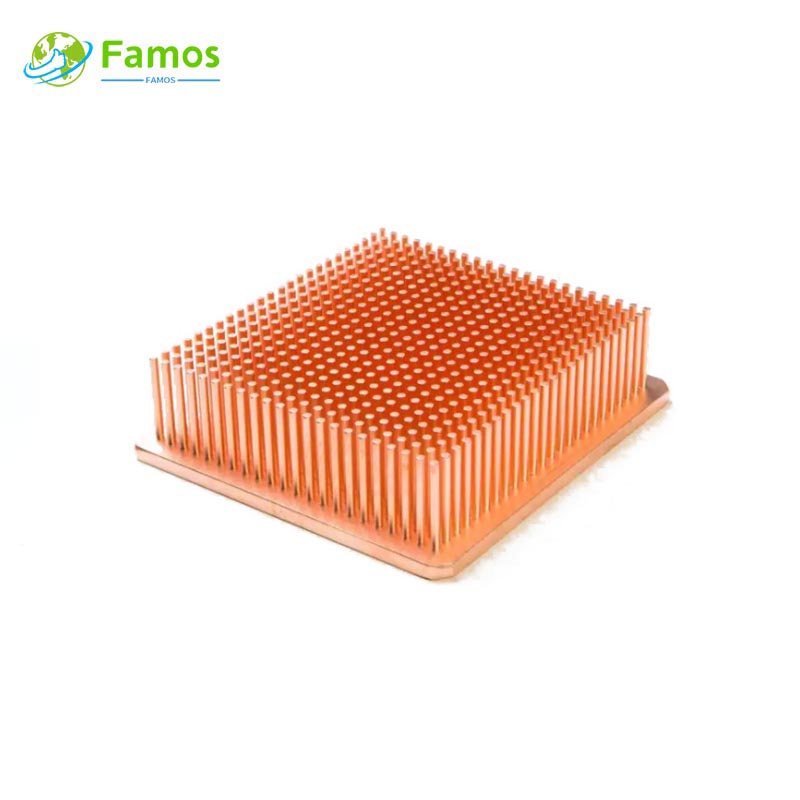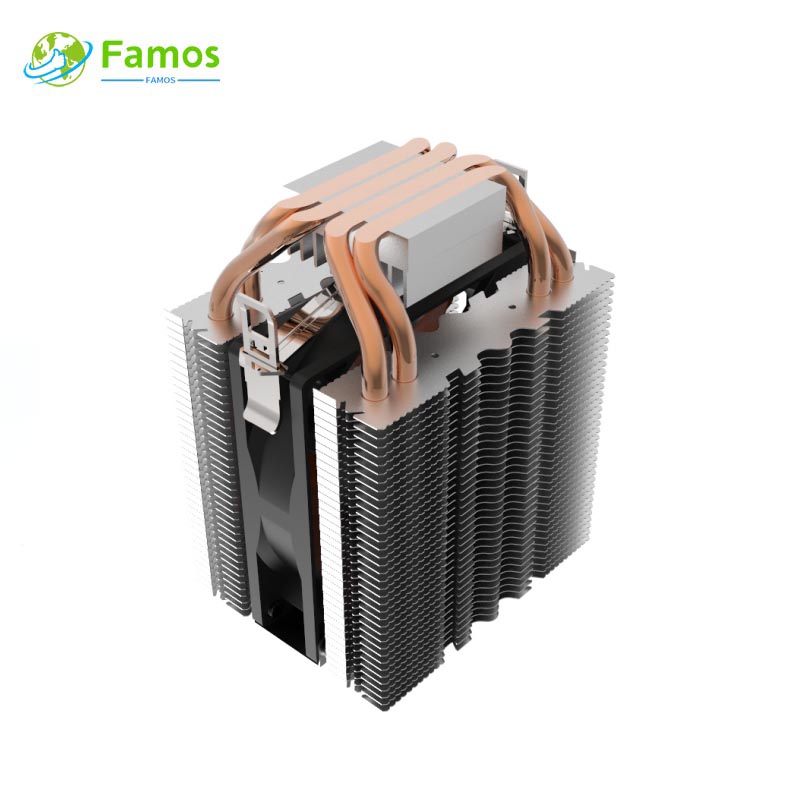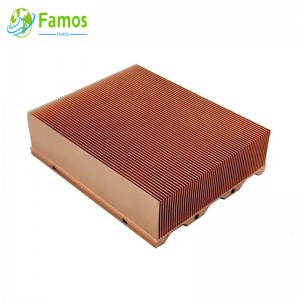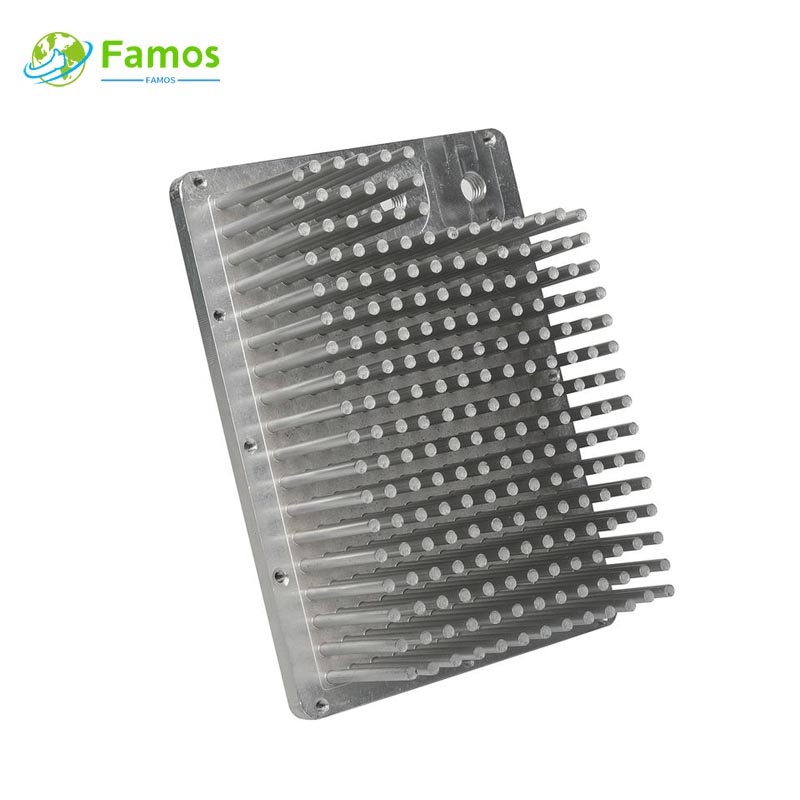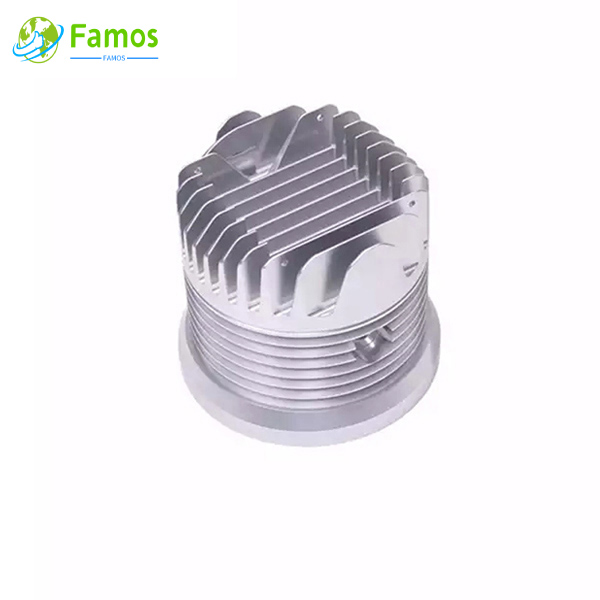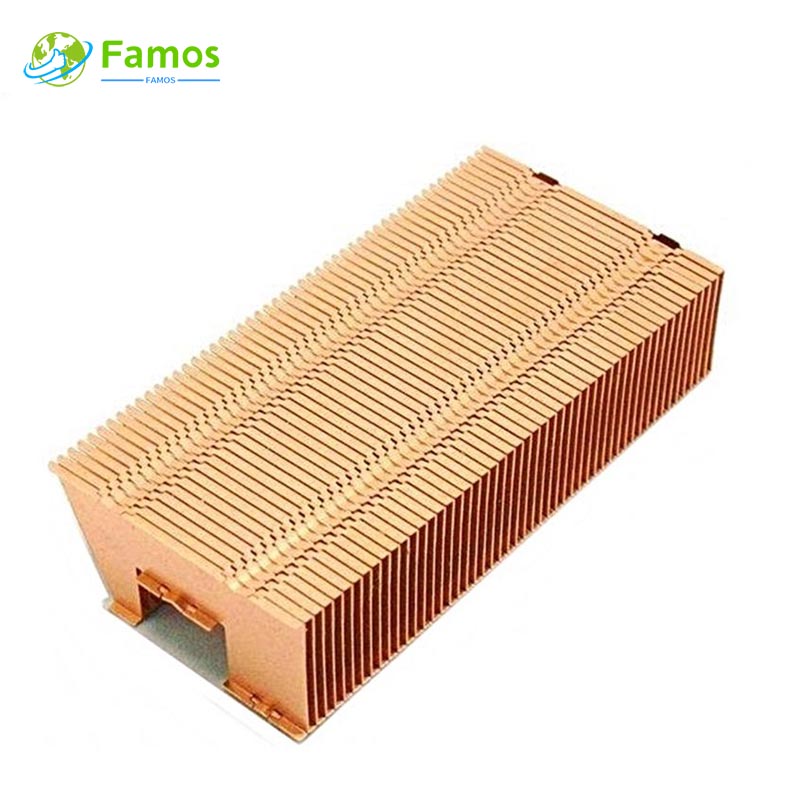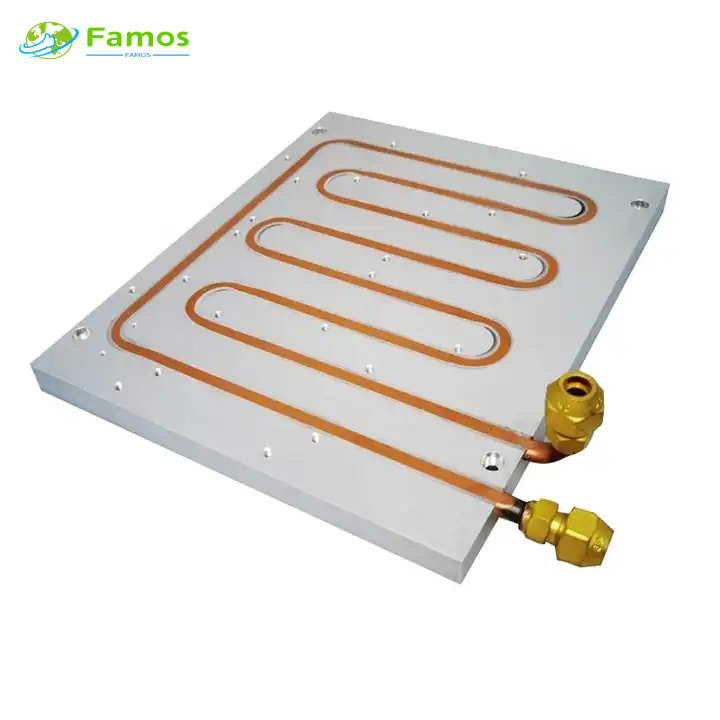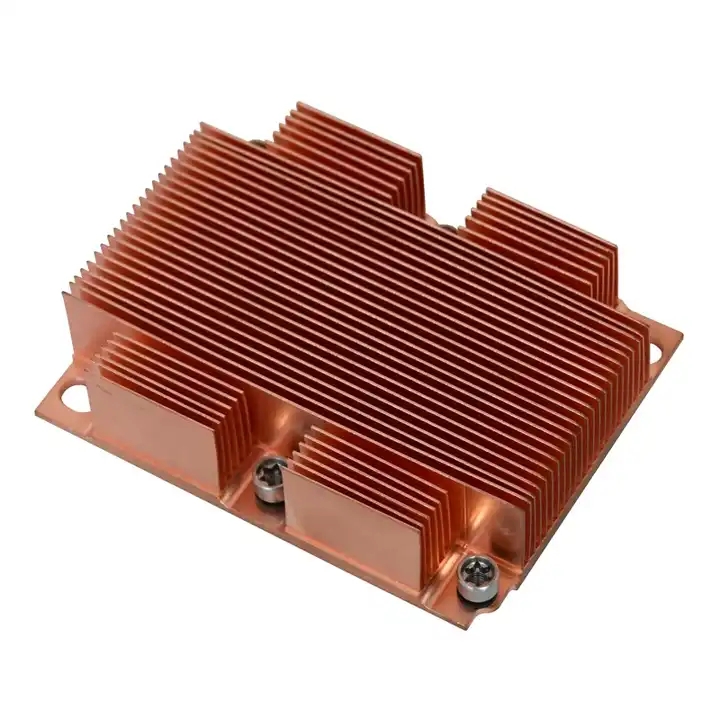
Skived fin heat sink is a type of heat sink with fins that are cut out of the solid material. The fins in a skived fin heat sink are thinner compared to other types of heat sinks, like extrusion heat sinks. Skived fin heat sinks are made by a manufacturing process called skiving, which is manufactured by high precision skiving machine with accurately controlled sharp blade, it cut thin piece of specified thickness from a whole piece of metal profile (AL6063 or copper C1100),then bend the thin piece metal vertically to form the heat sink fins.The skived fin heat sink provides high thermal efficiency in high-power applications. This type of heat sink offers advantages such as minimal thermal resistance, shorter heat transfer paths, and compact size. Below are detailed descriptions of the performance of skived fin heat sinks from multiple perspectives.
1.Thermal Resistance: Thermal resistance is defined as the temperature difference between the heat source and the ambient environment, divided by the heat flux, or rate of heat transfer, through the heat sink:
Rth = (Tsource - Tambient) / Q
where Rth = thermal resistance (in degrees Celsius per Watt), Tsource = temperature of the heat source, Tambient = temperature of the surrounding environment, and Q = heat flux (in Watts).
Skived fin heat sinks exhibit lower thermal resistance, which is a measure of how effectively the heat sink transfers heat from the source to the surrounding environment. The skived fin heat sink has a larger surface area to volume ratio than extrusion heat sinks, which makes them more efficient at dissipating heat.
2. Heat Dissipation: Because skived fins have thinner walls compared to extruded fins, resulting in a larger surface area for heat transfer.skiving fin heat sinks have a larger surface area compared to extrusion heat sinks, they can dissipate more heat. The skived fins have a larger contact area with the heat source, which results in superior heat dissipation. The skiving process also allows for greater flexibility in designing the fin geometry, enabling more efficient heat transfer
3. Weight and Size: Skived fin heat sinks are typically lighter and smaller than other types of heat sinks. This makes them ideal for use in small electronic devices with limited space available for cooling systems.
4. Manufacturing complexity: Skived fin heat sink manufacturing is more complex and costly compared to extrusion heat sink manufacturing. Producing skived fin heat sinks requires specialized equipment and skilled labour. So skived fin heat sink is more suitable for small order quantity.
5. Corrosion Resistance: Skived fin heat sinks made from aluminum or copper may corrode when exposed to chemicals, humidity, or other environmental factors. , so we often need do surface treatment for them, skived fin heat sinks are coated with a layer of protective material to prevent corrosion.
Overall, a skived fin heat sink is designed to minimize thermal resistance, resulting in efficient heat dissipation and lower temperatures at the heat source. The thermal resistance of a skived fin heat sink is influenced by factors such as fin geometry, material properties, and operating condition skived fin heat sinks are known for their high thermal efficiency and compact size, making them ideal for use in high-power applications with limited space for cooling systems.
If You Are in Business, You May Like
Types of Heat Sink
In order to meet different heat dissipation requirements, our factory can produce different type heat sinks with many different process, such as below:
Post time: May-04-2023

